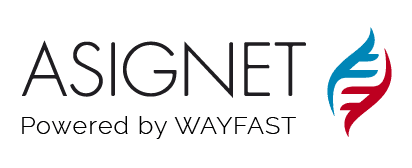The traditional full API integration can work with stages where alternative automation tools (like bots, web spiders and web portal process automation tool, network asset discovery, OCRs and more) are used as a substitute for manual interaction, and human intervention are ordering and provisioning management, invoice management, geographical scale in multisourcing service integration (MSI), inventory count, invoice processing, data loading and help desk and support.
Technology product management leaders should phase the deployment of the stages depending on their current strengths, weaknesses, and priorities. These stages are:
Ordering and Provisioning Management:
The best way to get orders into systems is via APIs. Elements of manual work could be replaced by other automation techniques such as web portal automation processes and web spiders if customers have manual order entry. It is advisable that if enterprises have APIs, they shouldn’t be reverting it for the implementation of other automation tools.
Automation tools can monitor inboxes, automatically complete orders from the carriers and vendors, auto-populate and centralize order data into the Telecom Expense Management platforms when enterprises are scaling into new carriers with low volumes without APIs and/or without strong human presence.
Invoice Processing and Management:
Bots, web portal automation process tools and web spiders can automatically extract data and move to the Optical Character Recognition (OCR) for processing invoices into the central management database and then into the TEM platform for the required format depending on the structure that is managed.
Asignet’s automation tools can repeatedly search for invoices and relevant details from the carrier portals if an API isn’t possible. OCRs can also map and parse invoices by using certain tags, words or even a line item.
Thanks to this kind of automation any invoice form such as EDI, PDF, scanned, portal, email, text or other formats can be read automatically. The collected data can then be centralized and logged into the TEM platform while at the same time checking it against inventory items to ensure charges and payments are processed on what is actually being used and paid for.
Geographical scale in format MSI:
Billing formats are different and detail/language and scripture will vary when dealing with global integrations in multiple countries, different formats or low or uncertain volumes/demands across a widespread requirement (IoT, cloud or other vendor types). In many cases, this requires manual integration efforts to map the integration points which can take up to six to nine months for large or complex regional and global integrations.
These automation processes eliminate manual key-in data processes on invoices that don’t fit other formats. Such automation can also be used for ongoing processes by mapping these invoices in the platform and configuration management database (CMDB) actual inventory.
In a recent study, Gartner has seen a case where a TEM vendor saved $1 million on resourcing costs using this automation rather than using manual resources for scaling geographically without a human presence at all. This showed an increased speed, the efficiency of implementation and provisioning and reduced costs.
Inventory Management:
Alternative process automation can be used for asset/inventory discovery in order to quicken inventory set-ups. The automation process extracts the required inventory data from the vendor portal then maps it with the CMDB across cloud, telecom, and other technical environments.
The TEM platform uses this as an input for verifying the inventory against carriers and the infrastructure investments that the company has in place. It then maps the assets with the invoices that come in. This also links to the various different systems through workflows and enables auto-connect and disconnect through all systems working together.
Service Help Desk/Reporting:
We all know that chatbots are frequently used for first-line support on help desks. They can provide more targeted and customized responses, and can also track through multiple record details on the end-user caller to provide the human call agent with the complete details and possible solutions for faster resolutions when combined with Machine Learning and Artificial Intelligence mechanisms.
These bots can also provide auto-responses, like assisting in managing and sorting emails to the service desk on weekends or day and night. On the reporting side, bots can also assist with configuring and report scheduling.
On service help desks for basic support, the initial call or contact could be handled by a chatbot, which in effect takes an agent’s place. At the same time, the bot could locate data on the caller (from several different places) and centralize information in one location in a matter of seconds.
The source of the issue could then be found to assist the human part of the interaction for resolution. The desired outcome of most automation programs should be a reduction in labor cost, increased speed, but also enhanced productivity and service delivery in enterprises.
Contact us for more information about our Robotic Process Automation solution.






